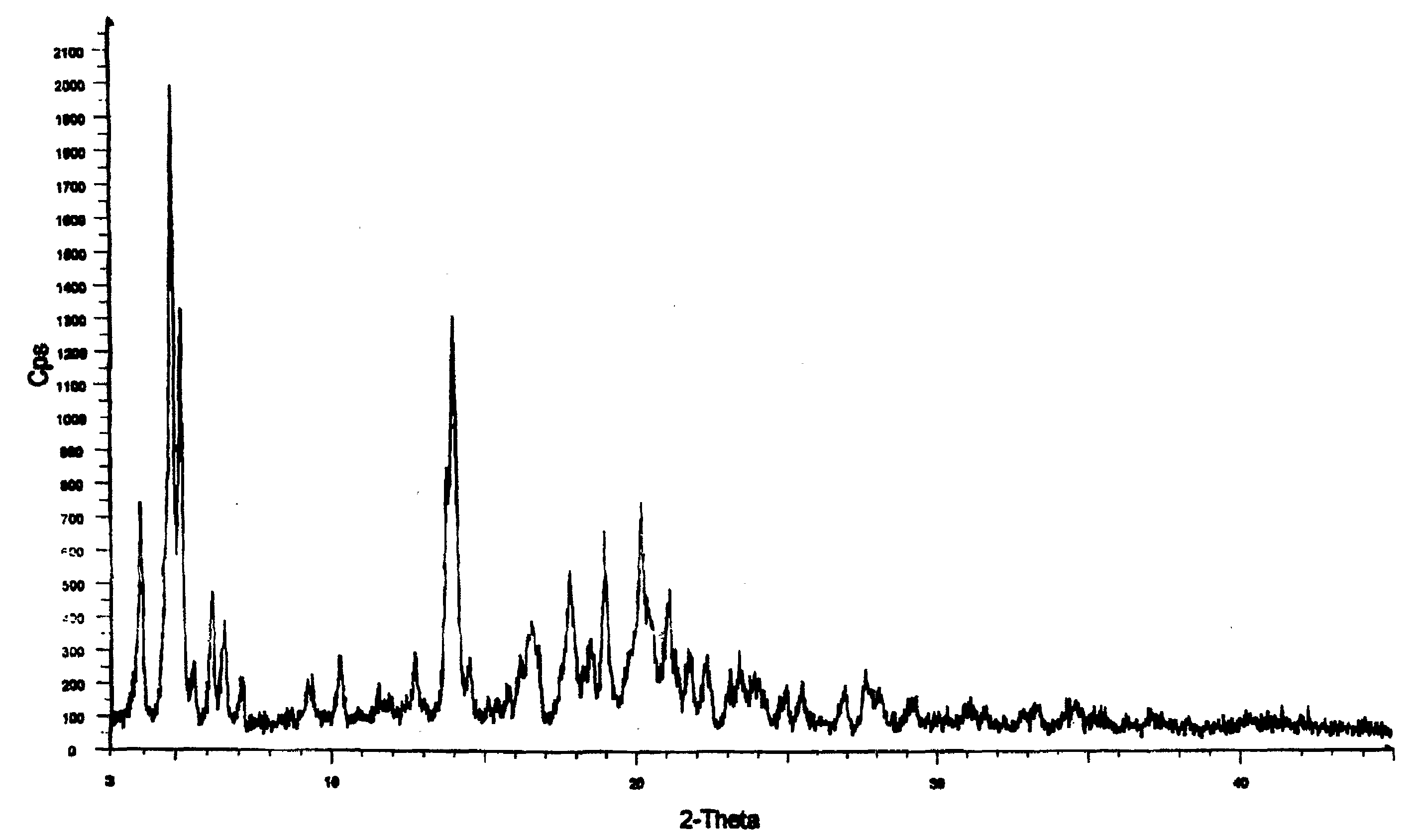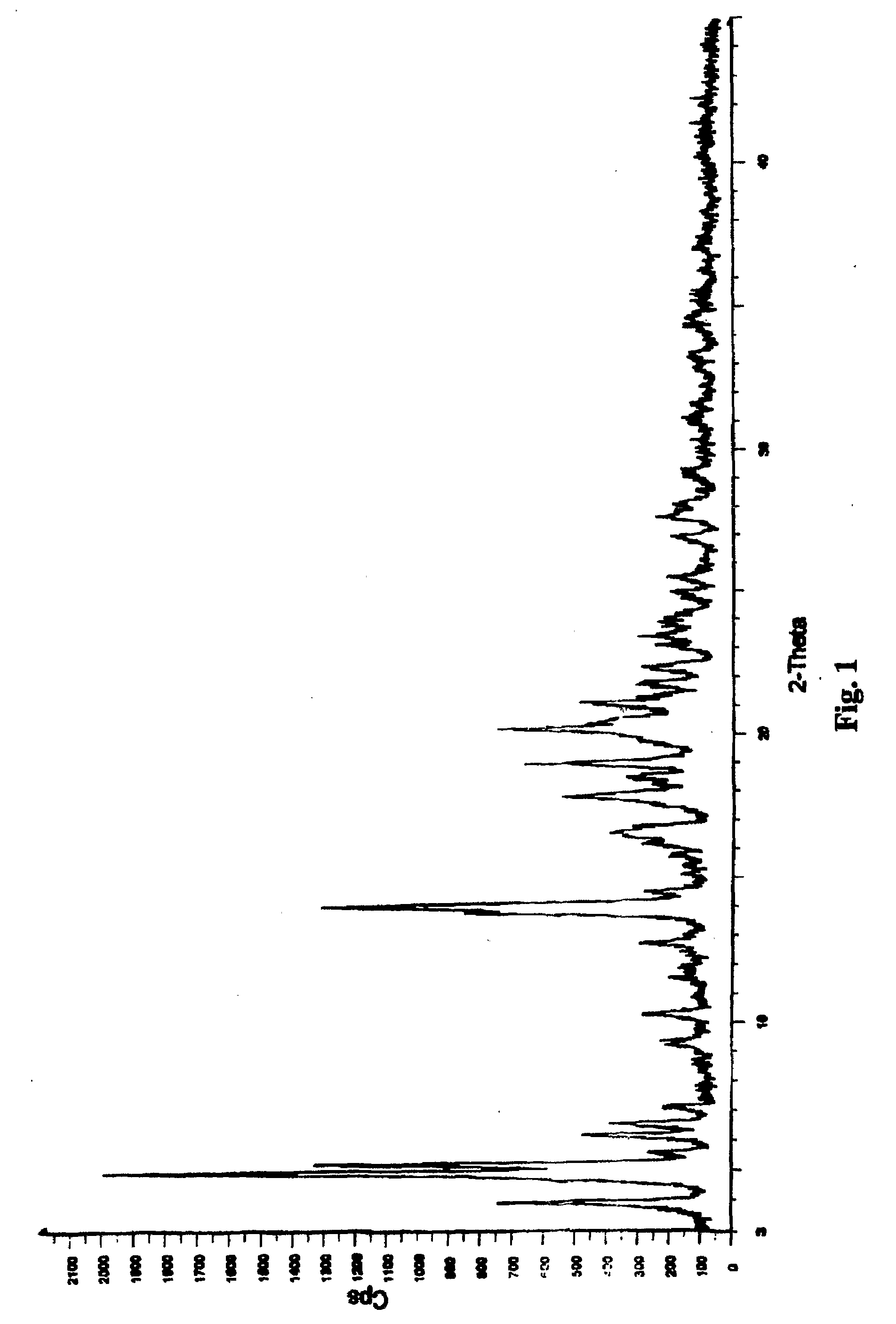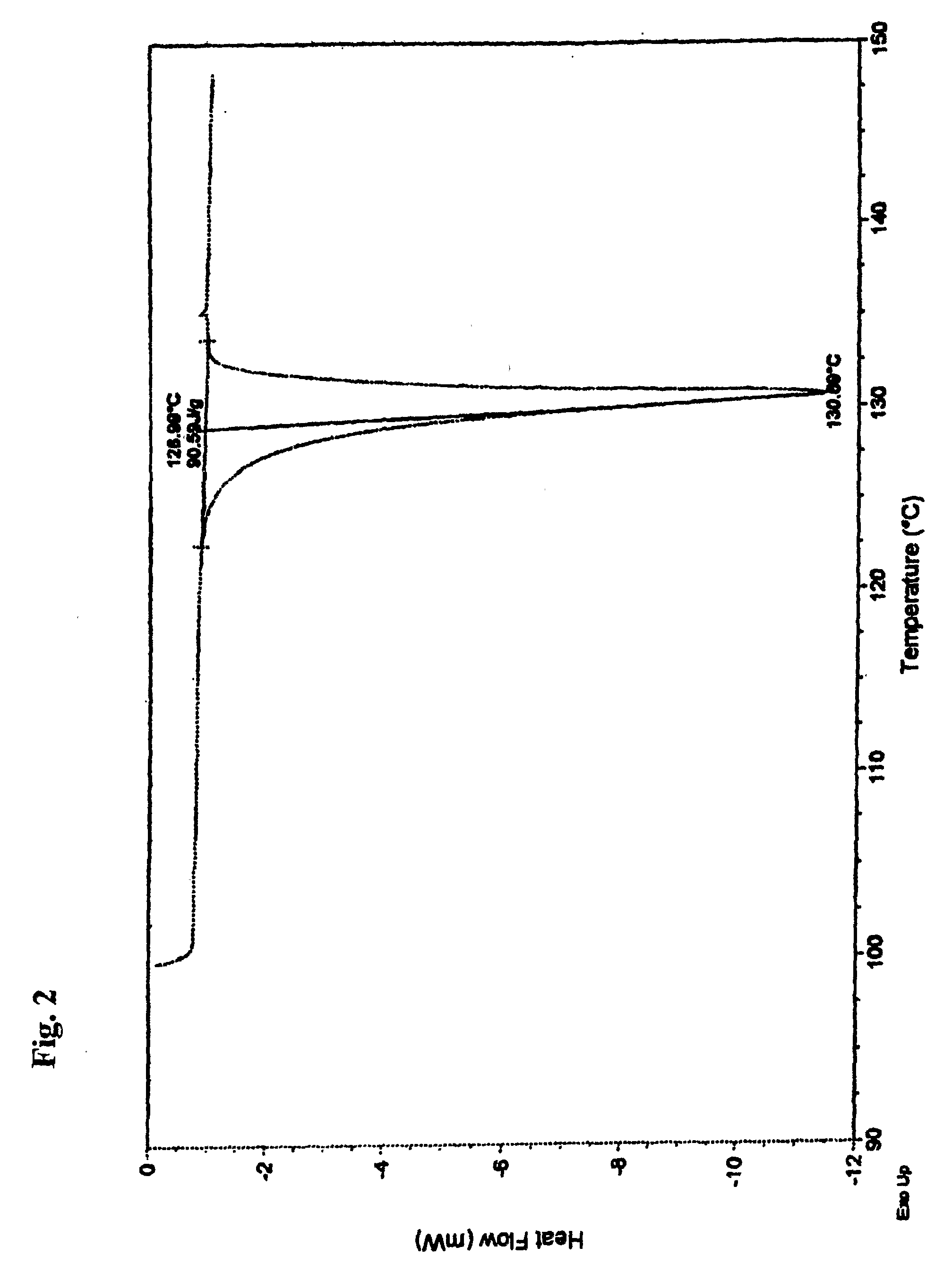Stable Nateglinide Form B Compositions
a technology of nateglinide and composition, which is applied in the direction of biocide, organic chemistry, carboxylic acid amide separation/purification, etc., can solve the problems of unstable nateglinide form b crystals and unsuitable for medicine us
- Summary
- Abstract
- Description
- Claims
- Application Information
AI Technical Summary
Benefits of technology
Problems solved by technology
Method used
Image
Examples
example 1
[0034]Nateglinide Form B crystals were prepared by mixing 3 kg of nateglinide and 6 L of isopropanol, then stirring and heating the mixture to 40-45° C. until the nateglinide dissolved. A quantity of 0.3 kg activated carbon was added and stirring was continued for 15 minutes. The solution was filtered through a Nutsche pressure filter and added in the hot condition to 45 L of heptane that had been preheated to 42.5±2.5° C. With continuous mixing of the solution, 15 L of water, at a temperature of 42.5±2.5° C., were slowly added over a period of about 25 minutes and the mixture was allowed to cool; precipitation began as the temperature fell below about 39° C. The liquid was removed by centrifugation and the solids washed with 3 L of heptane, then centrifugation was continued to dry the solids. The dried solid nateglinide Form B was de-lumped using an oscillating granulator, then air jet milled to produce fine particles of nateglinide Form B, in which nateglinide Form H was not detec...
example 2
[0036]A mixture of nateglinide Form B, starch, and mannitol was prepared by charging 45 L of heptane into a reactor and chilling to 0-5° C. The starch (1.5 Kg) and mannitol (2 Kg) were added to the heptane and the mixture was stirred for about 15 minutes at 0 to 5° C. 3 kg of nateglinide Form B crystals were added to the mixture. The resulting suspension was stirred for about an hour at 0-5° C. and then centrifuged to remove liquid. The wet solid was dried in an air tray drier at about 90 to 100° C. for about 8 hours, until the loss on drying was less than about 0.5 percent by weight. The dried mixture was de-lumped, multi-milled and then air jet milled to produce fine particles having the size distribution: D90≦20 μm; D50≦10 μm; and D10≦5 μm; as shown in FIG. 4. The term “D90≦20 μm” means that 90 percent of the particles have a diameter not exceeding about 20 μm. The mixture obtained by the above procedure was free of nateglinde Form H crystals, as shown in the X-ray diffraction pa...
example 3
[0037]450 mL of heptane were charged into a round-bottom flask and chilled to 0-5° C. 15 g of starch and 20 g of mannitol were then added, and the mixture was stirred for about 15 minutes while maintaining the low temperature. 30 g of nateglinide Form B were added and the mixture was stirred for about an hour, without allowing the temperature to increase. Solids were isolated by filtration and then were dried for about 30 minutes in a fluid bed drier having an air inlet temperature of 40-50° C. and an air flow rate about 16 L / sec. The dried mixture was de-lumped and then air jet milled to the following particle size distribution: D90≦20 μm; D50≦10 μm; and D10≦5 μm. The fine product was found to be free of nateglinide Form H crystals.
PUM
| Property | Measurement | Unit |
|---|---|---|
| Temperature | aaaaa | aaaaa |
| Temperature | aaaaa | aaaaa |
| Temperature | aaaaa | aaaaa |
Abstract
Description
Claims
Application Information
 Login to View More
Login to View More - R&D
- Intellectual Property
- Life Sciences
- Materials
- Tech Scout
- Unparalleled Data Quality
- Higher Quality Content
- 60% Fewer Hallucinations
Browse by: Latest US Patents, China's latest patents, Technical Efficacy Thesaurus, Application Domain, Technology Topic, Popular Technical Reports.
© 2025 PatSnap. All rights reserved.Legal|Privacy policy|Modern Slavery Act Transparency Statement|Sitemap|About US| Contact US: help@patsnap.com



